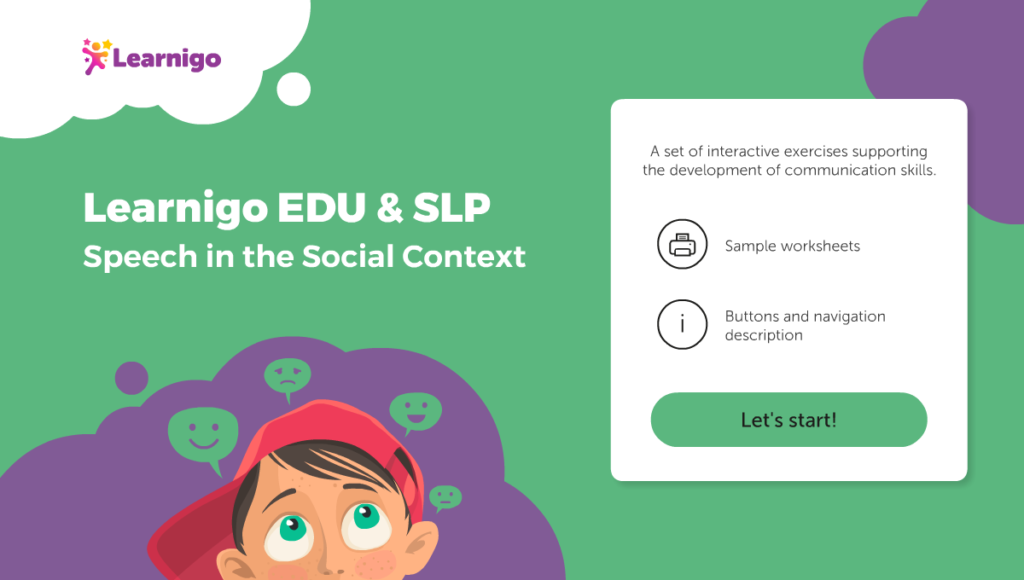
Speech in the Social Context (EDU & SLP)
A set of interactive exercises supporting the development of social communication skills.
This DEMO represents less than 8% of the entire Speech in the Social Context product.
Try the entire program for FREE with our trial!
According to the American Speech-Language-Hearing Association, there are three skills involved in social communication:
- Using language for various purposes, from greeting, informing, demanding, promising, and requesting
- Changing language depending on the context, conversation partner, and location
- Following rules, such as initiating and maintaining the topic, turntaking, facial expressions, etc.
Features of this program include:
- Over 460 interactive screens centered on social communication skills
- A focus on understanding, recognizing, differentiating, and imitating common emotions and body language
- Online access to content to use at any place at any time (e.g., school, home, therapy office, on-the-go-, etc.)
- Opportunities to practice and apply emotions and body language in a social context
- Targeted practice for abstract and figurative language
- Dedicated activities for readers and non-readers
- Progress panels and visual-auditory rewards to support progress and reinforce accurate responses
- Table worksheets for additional practice/homework
Previous
Next